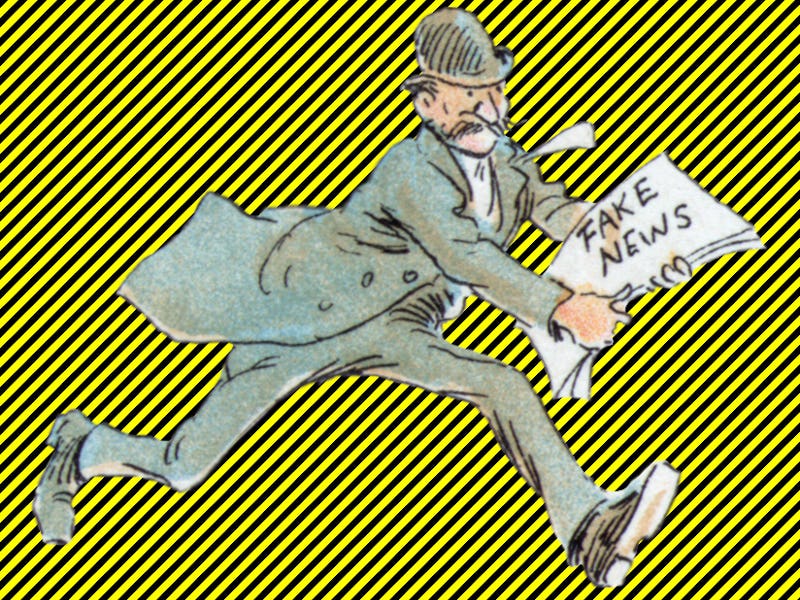Why Facebook Put 10 Tips on "Fake News" in Your News Feed
And put it in the news feed.

This week Facebook began inserting advisory pop-ups in the news feeds of users in 14 countries, including the U.S., about how to spot fake news — or as they label it, “false news.” It’s all in support of a new Facebook feature that empowers Facebook to report propaganda websites that look like legit news.
The pop-ups, which Facebook tells Inverse began showing up on Monday, are part of a series of PSAs the site is producing with the News Literacy Project, aimed at “helping people make more informed decisions” when they encounter fake news. The guidelines, which are made up of ten points, were written in collaboration with the nonprofit First Draft.
Facebook Vice President Adam Mosseri said in a press release earlier described the news feed as a “place for authentic communication.”
So, if you haven’t already, the next time you log in to Facebook, you may see this image at the top of your feed:
You'll probably see this in your newsfeed.
Click further to read the guidelines:
1. Be skeptical of headlines. False news stories often have catchy headlines in all caps with exclamation points. If shocking claims in the headline sound unbelievable, they probably are.
2. Look closely at the URL. A phony or look-alike URL may be a warning sign of false news. Many false news sites mimic authentic news sources by making small changes to the URL. You can go to the site to compare the URL to established sources.
3. Investigate the source. Ensure that the story is written by a source that you trust with a reputation for accuracy. If the story comes from an unfamiliar organization, check their “About” section to learn more.
4. Watch for unusual formatting. Many false news sites have misspellings or awkward layouts. Read carefully if you see these signs.
5. Consider the photos. False news stories often contain manipulated images or videos. Sometimes the photo may be authentic, but taken out of context. You can search for the photo or image to verify where it came from.
6. Inspect the dates. False news stories may contain timelines that make no sense, or event dates that have been altered.
7. Check the evidence. Check the author’s sources to confirm that they are accurate. Lack of evidence or reliance on unnamed experts may indicate a false news story.
8. Look at other reports. If no other news source is reporting the same story, it may indicate that the story is false. If the story is reported by multiple sources you trust, it’s more likely to be true.
9. Is the story a joke? Sometimes false news stories can be hard to distinguish from humor or satire. Check whether the source is known for parody, and whether the story’s details and tone suggest it may be just for fun.
10. Some stories are intentionally false. Think critically about the stories you read, and only share news that you know to be credible.
Reporting a story as "fake news" on Facebook.
We already know the backstory of Facebook’s reform efforts by heart: In the run up to the 2016 presidential election, fake news spread across Facebook like wildfire, influencing people’s opinions about candidates Donald Trump and Hillary Clinton. This pattern may or may not have changed the outcome of the election, of course. Facebook CEO Mark Zuckerberg in the face of damning evidence insisted that it did not, but his actions towards helping people spot bullshit signaled some acceptance on the company’s part.
After you see these pop-ups a few times in your newsfeeds, they will disappear. It’s a direct, but relatively unobtrusive, action. Take that, Pizzagate.